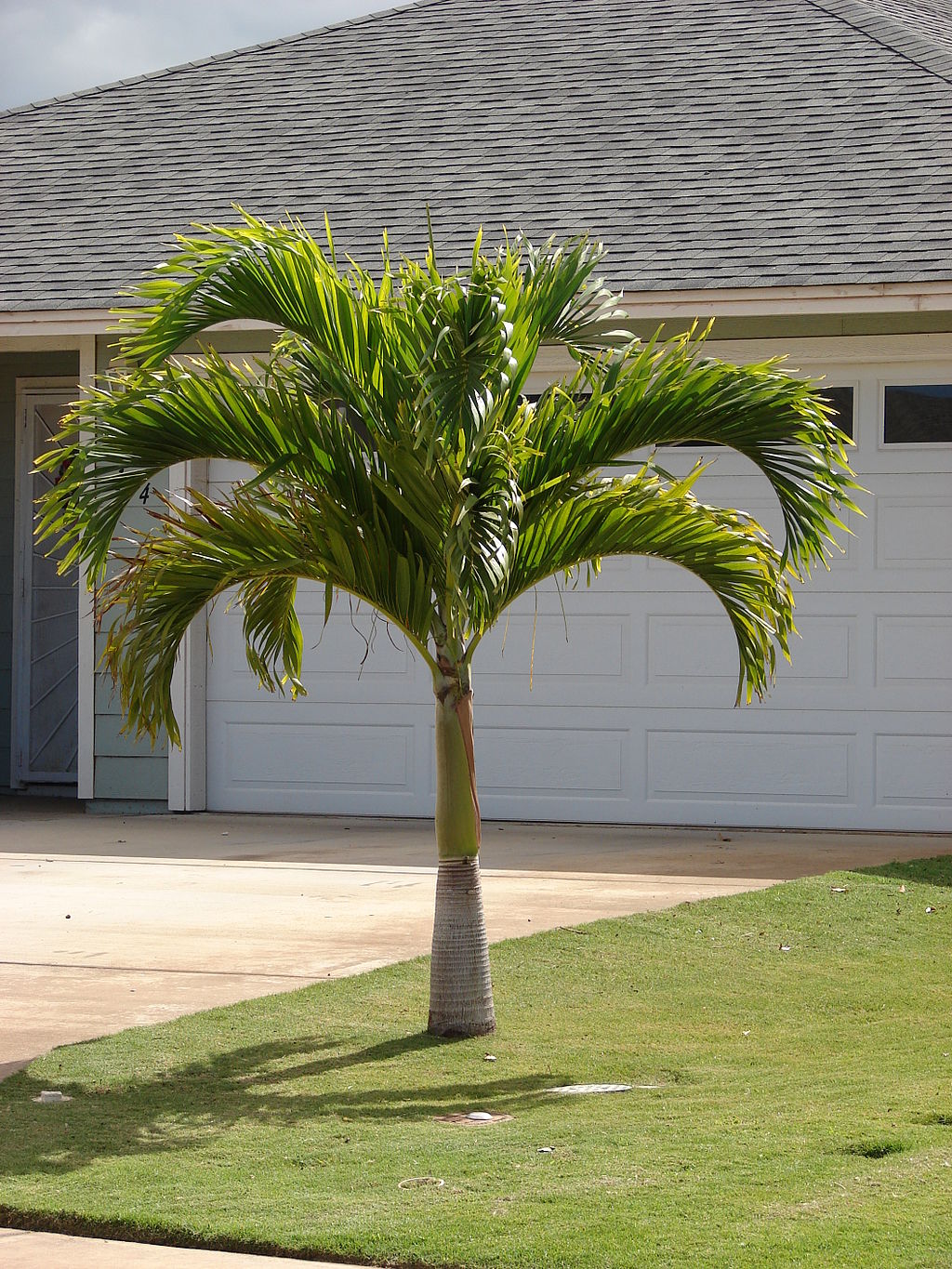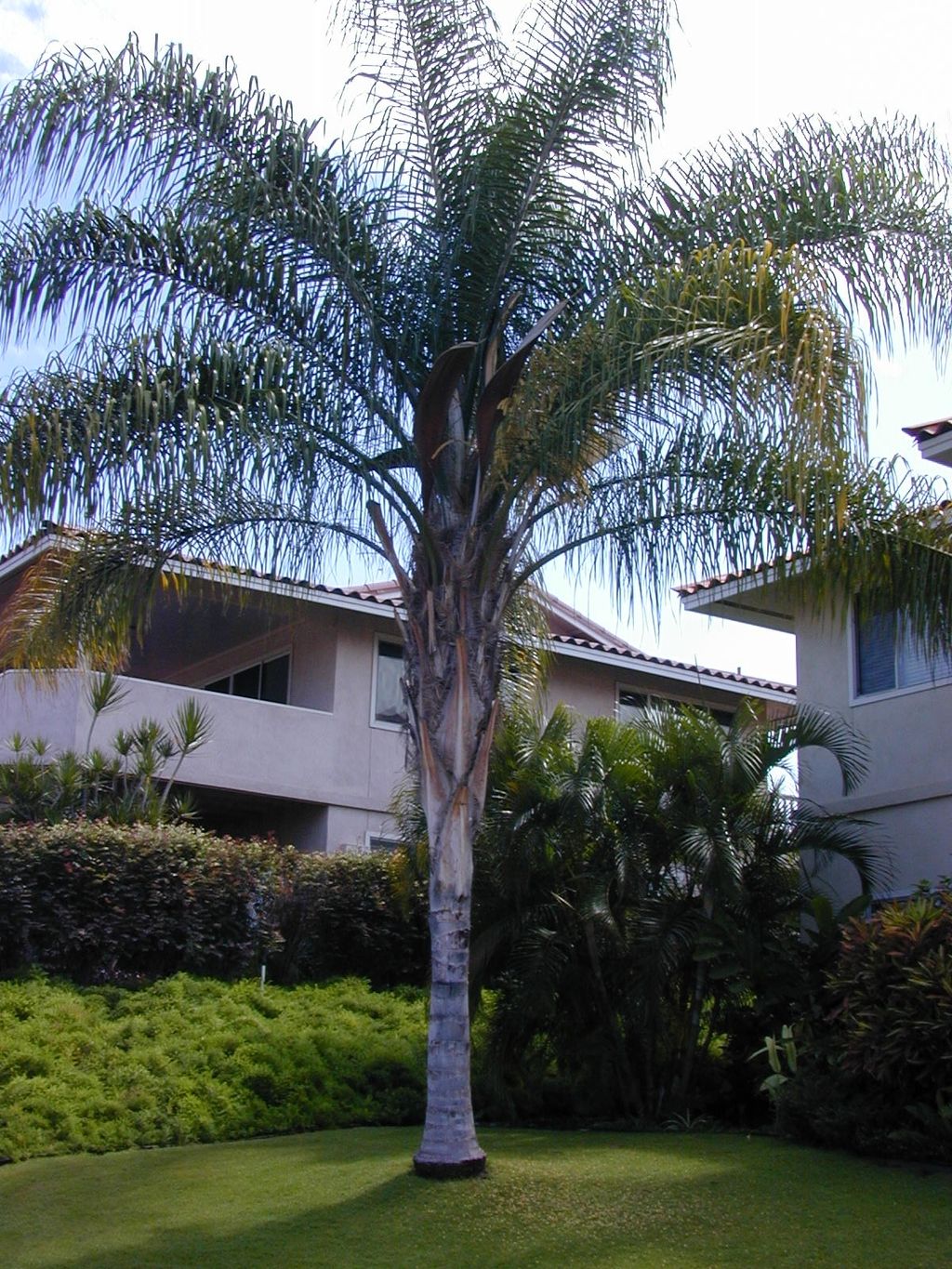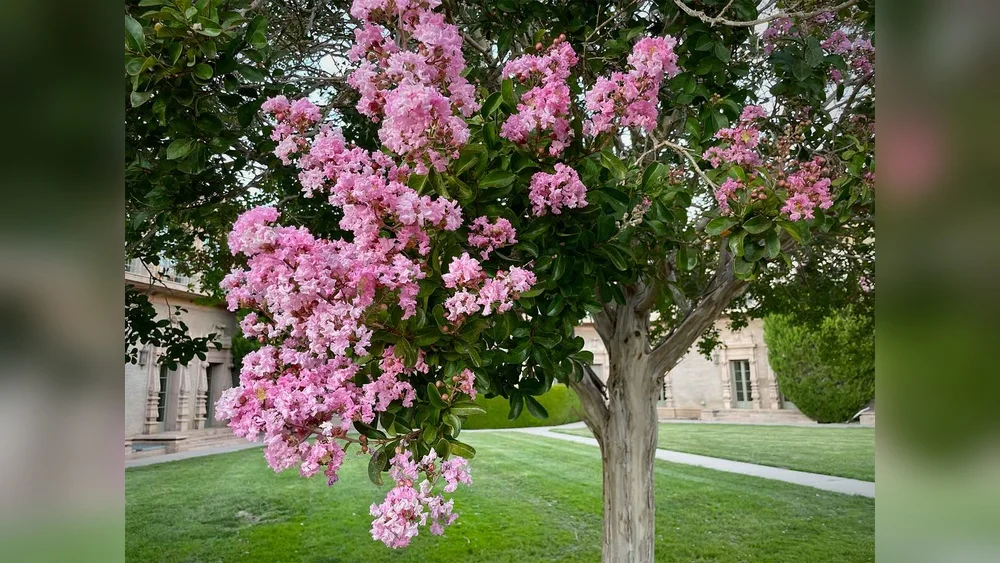Choosing the best tree to plant in Central Florida can transform your yard into a beautiful, thriving space. But with so many options, how do you know which one will grow well and look great year after year?
You want a tree that suits the climate, requires little fuss, and adds real value to your home. Whether you’re aiming for shade, colorful blooms, or fruit, this guide will help you pick the perfect tree that fits your needs and the unique Central Florida environment.
Keep reading to discover which trees will thrive in your landscape and make your outdoor space truly shine.
Native Trees For Central Florida
Native trees form the backbone of Central Florida’s natural beauty. They thrive in local soil and climate. These trees support wildlife and reduce maintenance needs.
Choosing native trees helps the environment and saves water. They also resist pests better than non-native species. Native trees create a natural habitat for birds and insects.
Live Oak And Its Benefits
The Live Oak is a sturdy tree with a wide canopy. It provides excellent shade in hot Florida weather. Its strong branches resist storms and heavy winds. Wildlife such as squirrels and birds find shelter here. The tree’s deep roots prevent soil erosion.
Slash Pine And Longleaf Pine
Slash Pine grows fast and adapts well to wet soils. Longleaf Pine is known for its tall, straight trunk. Both pines offer habitat for birds and small animals. Their needles create a soft, natural ground cover. These pines are important for local ecosystems.
Southern Magnolia And Bald Cypress
Southern Magnolia is famous for its large, fragrant white flowers. It stays green all year, adding color to any yard. Bald Cypress grows well in wet areas and can tolerate flooding. Its unique “knees” help with oxygen and stability. Both trees attract pollinators and birds.
American Sycamore And Hop Tree
American Sycamore has a striking bark that peels in patches. It grows quickly and can reach great heights. Hop Tree produces small hop-like flowers in spring. It supports butterflies and other pollinators. These trees add diversity and beauty to landscapes.
Sassafras And Pond Cypress
Sassafras has distinct, aromatic leaves and grows well in dry soils. Pond Cypress thrives in swampy areas and wet soils. Both trees offer food and shelter for wildlife. Their unique shapes and colors enhance garden appeal.

Credit: www.epicgardening.com
Fast-growing Trees
Fast-growing trees are an excellent choice for Central Florida gardeners. They provide quick shade and beauty, improving outdoor spaces in a short time. Choosing the right tree can save years of waiting and add value to your property. Fast growth also helps create privacy and reduces soil erosion.
Top Shade Trees For Quick Growth
Live Oak is a popular fast-growing shade tree in Central Florida. It can grow up to 2 feet per year. Bald Cypress adapts well to wet soils and grows quickly. Slash Pine is another fast grower, reaching maturity fast and offering good shade. The Southern Magnolia grows fast and provides large, fragrant flowers. These trees thrive in Central Florida’s climate and soil conditions.
Considerations For Fast Growth
Plant trees in areas with enough sunlight and space to grow. Avoid planting near power lines or buildings. Water young trees regularly to support strong roots. Use mulch to keep soil moist and control weeds. Choose native species to ensure better growth and disease resistance. Proper care helps fast-growing trees become healthy and strong.
Planting Tips For Central Florida
Planting trees in Central Florida requires some care to ensure they thrive. The climate offers warmth and humidity, but also challenges like sandy soil and occasional drought. Following key planting tips helps your tree grow strong and healthy. Focus on timing, location, and avoiding common mistakes to get the best results.
Best Seasons To Plant
Plant trees during the cooler months of fall and winter. The weather is milder, reducing stress on young roots. Spring planting can work but may need extra watering. Avoid planting in the hot summer months to prevent heat shock. These seasons allow roots to establish before the heat returns.
Choosing The Right Location
Select a spot with enough space for your tree to grow wide and tall. Avoid planting near power lines, buildings, or sidewalks. Consider sunlight needs; most Central Florida trees prefer full sun. Check soil drainage to avoid standing water, which harms roots. A good location supports healthy growth and long life.
Avoiding Common Planting Mistakes
Do not plant trees too deep; the root flare should be visible above soil. Water new trees deeply but not too often to encourage deep roots. Avoid compacting soil around roots during planting. Mulch around the base but keep it away from the trunk. These steps prevent disease and promote strong development.
Heat-tolerant Trees And Plants
Central Florida’s climate demands plants that can handle high heat and strong sunlight. Heat-tolerant trees and plants survive dry spells and keep their color year-round. These plants grow well with less water and resist sun damage. Choosing the right species helps create a vibrant, green space despite the heat.
Trees That Thrive In Florida Heat
Live Oak is a classic choice for Central Florida. It grows large with a wide canopy that offers excellent shade. Bald Cypress adapts well to wet and dry areas, making it a versatile option. Slash Pine and Longleaf Pine are native pines that handle heat and poor soil. Southern Magnolia provides glossy leaves and fragrant flowers, perfect for adding beauty and shade. These trees require little extra care once established and stand strong in Florida’s sun.
Summer Crops And Exotic Plants
Okra thrives in summer heat and produces abundant pods for harvest. Roselle is a tropical plant that grows well and adds bright red flowers. Sugarcane is a classic crop for hot climates and can add a tropical touch to your garden. Exotic fruit trees like mango and papaya flourish in Central Florida’s warmth. These plants bring color and food to your garden while handling the intense sun and heat with ease.
Ornamental And Flowering Trees
Ornamental and flowering trees brighten Central Florida landscapes. They offer color, texture, and seasonal interest. These trees attract birds and butterflies, enhancing garden life. Many thrive in Florida’s warm climate with minimal care. Choose trees that fit your space and style for best results.
Crape Myrtle And Eastern Redbud
Crape Myrtle blooms with vibrant pink, red, or white flowers. It grows well in full sun and dry soil. Its smooth bark and summer flowers add year-round appeal. Eastern Redbud shows lovely pink blossoms early in spring. It prefers partial shade and well-drained soil. Both trees bring bright color to any yard.
Fringetree And Flowering Dogwood
Fringetree has delicate, fringe-like white flowers in spring. It grows in sun or partial shade and tolerates moist soil. Flowering Dogwood is famous for its showy white or pink blooms. It prefers partial shade and rich soil. These trees add charm and grace to gardens and parks.
Little Gem Magnolia And Frangipani
Little Gem Magnolia offers large, fragrant white flowers all summer. It stays compact, perfect for small spaces. Frangipani features exotic, colorful blooms and a sweet scent. It loves full sun and well-drained soil. Both trees provide beauty and fragrance for Central Florida gardens.

Credit: www.groundsource.pro
Fruit Trees For Central Florida Gardens
Fruit trees make a great addition to Central Florida gardens. They provide fresh produce and add beauty to outdoor spaces. The warm climate supports many types of fruit trees that thrive with proper care.
Choosing the right fruit tree depends on space, soil, and sunlight. Here are some popular options for Central Florida gardeners.
Citrus Varieties
Citrus trees are iconic in Central Florida. Oranges, lemons, limes, and grapefruits grow well here. They prefer full sun and well-drained soil. Citrus trees need regular watering and some protection from frost. Their fragrant flowers attract pollinators and their fruit is perfect for fresh juice or snacks.
Mango, Avocado, And Tropical Fruits
Mango and avocado trees thrive in Central Florida’s warm climate. Mango trees produce sweet, juicy fruit in summer. Avocados provide creamy fruit used in many dishes. Other tropical fruits like guava and papaya also grow well. These trees need space and well-drained soil to avoid root problems.
Other Edible Trees
Fig trees are easy to grow and produce sweet fruit. Pomegranate trees add color and tasty fruit to gardens. Persimmons and loquats are lesser-known but well-suited to the area. These trees offer variety and extend harvest season beyond common citrus and tropical fruits.
Drought-tolerant And Low Maintenance Trees
Central Florida’s climate challenges gardeners with dry spells and hot summers. Choosing drought-tolerant and low maintenance trees helps save water and effort. These trees thrive with minimal watering and resist heat stress. They keep landscapes green and healthy even during dry periods. Planting such trees benefits both the environment and your wallet.
Trees Suited For Dry Spells
Live Oak stands strong with deep roots that find water easily. It provides excellent shade and requires little care once established. Bald Cypress adapts well to dry and wet conditions, making it versatile. Southern Magnolia offers glossy leaves and fragrant flowers, thriving in dry soil. Crepe Myrtle blooms beautifully and tolerates drought well. These trees suit Central Florida’s dry and hot climate perfectly.
Care Tips For Minimal Water Use
Apply mulch around trees to keep soil moist and cool. Water deeply but less often to encourage strong roots. Avoid frequent shallow watering that wastes water and weakens roots. Plant trees during cooler months to reduce water stress. Check soil moisture before watering to prevent overwatering. Prune dead branches to improve tree health and reduce water demand.

Credit: www.groundsource.pro
Shade Trees To Enhance Your Landscape
Shade trees bring many benefits to Central Florida landscapes. They help cool your home and yard during hot days. These trees also create a peaceful and relaxing outdoor space. Planting shade trees adds beauty and value to your property.
Choosing the right shade tree is important. The tree must suit Central Florida’s climate and soil. It should grow well without causing problems like root damage or excessive leaf drop. Good shade trees provide wide, dense canopies that block sunlight effectively.
Benefits Of Shade Trees
Shade trees reduce energy costs by cooling your house naturally. They lower air temperature around your home and yard. This helps reduce the need for air conditioning. Shade trees also protect you from harmful UV rays.
These trees improve air quality by absorbing carbon dioxide and releasing oxygen. They reduce noise pollution and provide homes for birds and wildlife. Shade trees increase your property’s curb appeal and can boost its market value.
Popular Shade Tree Choices
Live Oak is a favorite shade tree in Central Florida. It has a broad canopy and stays green year-round. Bald Cypress thrives in wet areas and offers a unique look with its feathery leaves.
Southern Magnolia features large glossy leaves and fragrant white flowers. Slash Pine grows quickly and provides good shade with its tall, open crown. Crape Myrtle adds color with its bright summer blooms and makes a lovely shade tree.
These trees fit well in Central Florida’s climate. They require moderate care and can handle the heat and occasional storms. Planting any of these will improve your landscape’s beauty and comfort.
Frequently Asked Questions
What Is The Best Tree To Grow In Central Florida?
The best trees to grow in Central Florida include Live Oak, Southern Magnolia, Slash Pine, Bald Cypress, and Longleaf Pine. These native trees thrive in the region’s climate, offering shade, beauty, and resilience to heat and occasional drought. Choose based on space and soil conditions.
What Is The Fastest Growing Tree In Central Florida?
The fastest growing tree in Central Florida is the American Sycamore. It can grow up to 3 feet per year and thrives in various soil types.
When’s The Best Time To Plant A Tree In Florida?
The best time to plant a tree in Florida is during the winter months. This period offers cooler temperatures and less stress for young trees. Trees can also be planted year-round if proper care is provided. Choose suitable species to match your location and avoid future size conflicts.
What Grows Well In Florida Heat?
Okra, roselle, sugarcane, tropical fruits, Southern magnolia, live oak, crape myrtle, and bald cypress thrive in Florida heat.
Conclusion
Choosing the right tree helps your garden thrive in Central Florida. Native trees like Live Oak and Bald Cypress suit the climate well. They offer shade, beauty, and support local wildlife. Planting during cooler months boosts growth success. Remember to pick a spot with enough space for roots and branches.
A well-chosen tree adds value and comfort to your home. Start today and watch your landscape flourish naturally and beautifully.

